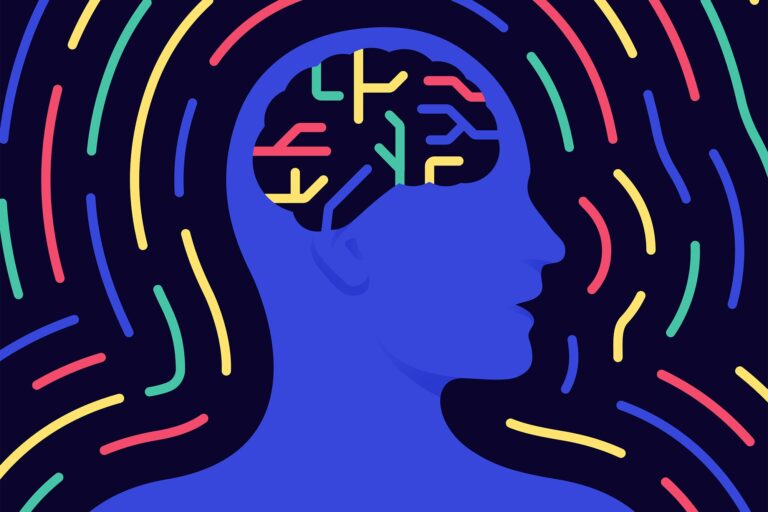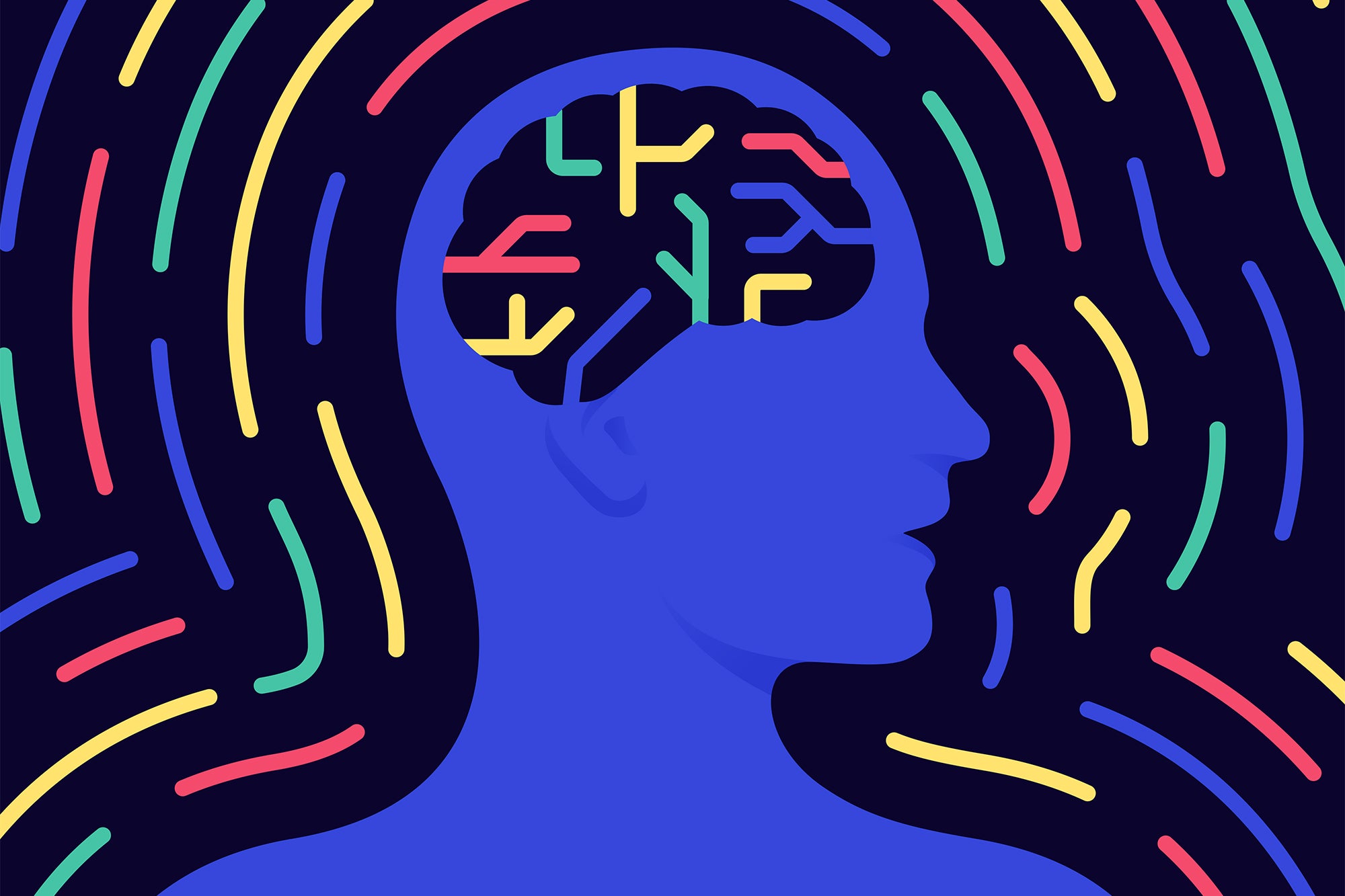
[ad_1]

When I was a teenager, I declared that I did not like my grandma. My mother excoriated me not just for saying such a thing but for feeling it. That, in her eyes, made me a terrible person. She believed that. I tried not to.
Our beliefs about emotions—whether we feel that they’re good or bad, controllable or uncontrollable, or useful or harmful—profoundly affect our life and relationships. Science has only recently committed itself to examining this issue, but it is now doing so with a vengeance. In 2020 the journal Frontiers in Psychology devoted an entire issue to everyday beliefs about emotion.
Why is all of this happening now? It all goes along with a growing interest in our response to moods and stress responses, says Stanford University psychologist James J. Gross. “I think this interest that’s been cooking for the past couple of decades has been magnified by the pandemic,” he says. “I think there’s a growing awareness of how anxious and depressed and stressed so many of us are.” He notes that there’s a robust link between beliefs about the controllability of emotions and the use of emotion-regulation strategies to reduce anxiety and depression.
In just the past few years cutting-edge theorizing has focused more on the link between belief and emotion. And new empirical research has drilled down on the effects of specific beliefs. To begin with, a number of psychologists have created self-report scales. The Emotion Beliefs Questionnaire, for example, asks people how much they agree with statements such as “There is very little use for negative emotions” and “It doesn’t matter how hard people try, they cannot change their positive emotions.” Another scale, Individual Beliefs about Emotion (IBAE), focuses on more subjective variations such as “I don’t want to admit to having certain feelings—but I know that I have them” and “If I let myself have some of these feelings, I fear I will lose control.”
IBAE co-creator and University of Arkansas clinical psychologist Jennifer Veilleux finds this questionnaire helpful in therapy. If people think they should keep their feelings private, for example, they may not reveal these emotions, even in therapy. If so, they can’t work on changing the feelings, she says.
Such beliefs matter. Research is showing that those who assume they can modify their emotions experience greater well-being both in the short and long term. If they feel sad or angry, for example, they can use an emotion-regulation strategy such as cognitive reappraisal to reduce their painful feelings.
Variously called reframing, reappraisal or rethinking, this popular technique has proved effective. A student who feels sad about their low grade, for example, can remind themselves that they didn’t study much for that exam but that if they studied more next time, they’d be likely to do better. An employee who isn’t promoted may consider how the advancement of a colleague with greater seniority was fair. The result is that there are fewer painful feelings such as sadness, anger or shame.
Another effective approach is learning to accept one’s emotions without judging them. In a series of studies tracking acceptance and overall emotional health, University of Toronto psychologist Brett Q. Ford showed that accepting negative emotions led to better mental health. People were asked to keep a daily diary for two weeks. Each evening they reflected on the most stressful event that day and on their responses at the time and afterward. Six months later “acceptors” felt less depression and anxiety and more well-being overall. In a related lab experiment, how much subjects accepted versus judged their emotions was measured. Then each was asked to prepare and give a speech—“a time-worn way of inducing stress in the lab,” Ford says. The higher their level of acceptance, she says, the less they felt anxiety, stress and worry.
While accepting your feelings is healthy, it may be even better to think of them as friends rather than foes. One experiment showed that people who viewed their emotions as more helpful than harmful in times of distress used effective strategies for moderating their emotions, showed less physiological reactivity during a stressful event (watching a disturbing film) and had greater overall well-being.
Which emotions do we see as our greatest friends? Perhaps unsurprisingly, people tend to value positive emotions over negative ones. Take happiness: there is a pervasive assumption in the U.S. that childhood is a naturally happy time and that children’s happiness should be their parents’ priority. In a recent survey, 73 percent of American parents rated happiness as the main goal in raising children, with Canada and France rating it even higher. In India only 49 percent of parents rated happiness so highly, while 51 percent prioritized achievement. Mexicans also valued success most, while Chinese parents ranked health first.
Yet this conviction about happiness, which seems self-evident to many of us, did not exist in the U.S. until the late 19th century, says George Mason University historian Peter Stearns. Before that time, 30 to 50 percent of children died before age five, and very young children were invariably put to work, sometimes at hard labor.
Our contemporary commitment to happiness has downsides, “for example, in measurably complicating reactions to childish unhappiness,” Stearns says. As psychologists point out, negative feelings have important functions. Fear, for example, may feel bad, but it helps us avoid danger. A parent who’s blissfully optimistic may be less vigilant about her toddler running into the street. Anger motivates us to confront those who threaten our goals or safety.
In fact, those convinced that negative feelings have their uses can exploit them. A classic study by psychologist Maya Tamir and her colleague, entitled “When Feeling Bad Is Expected to Be Good,” illustrated this. In a laboratory experiment, the researchers showed that people who saw anger as helpful in a hostile negotiation—one that involved a landlord intent on getting overdue rent from a tenant—won more concessions in the bargaining if they revved up their anger beforehand.
Perhaps most crucially, our convictions about emotions—our own and others’— powerfully influence our closest relationships. In new research, University of Toronto psychology doctoral student Angela M. Smith and their colleagues had subjects read a first-person narrative describing personal experiences with depression. The participants were then asked to imagine that this person was someone they knew and to pick from a list of potential likely responses to this classmate or neighbor. The study found that people who thought feelings were changeable felt more negatively about and less supportive of the depressed person.
Although the science of emotion beliefs in relationships is just starting, experts say we see these dynamics playing out every day. Many people are convinced that anger is toxic for relationships, Stanford’s Gross says. A married person with this conviction might suppress their anger and not reveal important issues that, expressed in constructive ways, could improve their marriage. A parent who’s angry with their child would likely also be upset with themselves and scared, Gross suggests. “So I then have just translated what would have been just anger into anger plus fear or sadness and upset. So that really complicates things,” he adds.
We tend to think of our views of emotions as primarily psychological, but they also have significant social, cultural and historical dimensions, Stearns says, pointing to the recent field of “emotions history.” Scientists are devoting new attention to how these ideas vary with country and shift over time. Consider gender: in our public discourse we often have heated debates about widespread views that anger is unbecoming in women and that vulnerability or sadness is so in men.
A study from 2019 sheds light on just where we are with these notions. A diverse group of young men and women read vignettes about a man or a woman crying in either stereotypically “masculine” settings such as firefighting and weightlifting or “feminine” settings such as nursing or figure skating. The participants approved much more of male firefighters weeping than male nurses. In the “masculine” settings, readers rated men shedding tears as more emotionally appropriate and strong.
The country we live in contributes to how we regard emotions and how we deal with them. In a study of nearly 4,000 people across 19 countries that is soon to be published in the journal American Psychologist, Tamir and her colleagues tested the relationship between using emotion regulation strategies with life satisfaction, depression and general psychological health.
In individualist countries such as Germany, the U.K. or the U.S., she explains, we think that emotions are inside us and tell us how we’re doing. Yet research shows, Tamir says, that “in collectivist cultures, emotions are considered something that happens between people, and whether we feel inside good or bad doesn’t really say anything about us. What is more important is how we behave and what we express.” For example, presenting a poker face rather than showing feelings, she says, is harmful for people in individualist societies, but in more collectivist societies, people who do this actually feel better. This may be because in individualist societies, people value expressing authentic emotions, even unpleasant ones, she says. People in collectivist cultures value social harmony more, and expressing negative feelings can disrupt that.
As this research surges on many fronts, new insights such as these are constantly emerging. As Montclair State University psychologist Manuel Gonzalez says, the ways we think about emotion permeates our life; it is shaped by the way we are raised and later by work and even the national culture in the country where we live. “These beliefs permeate so heavily into how we deal with emotions,” Gonzalez says, “how we handle our own emotions, what we allow ourselves to express [and] the ways that emotions pan out in our relationships—be it with family, with friends, at work, how we’re perceived by other people and how they behave toward us.”
[ad_2]